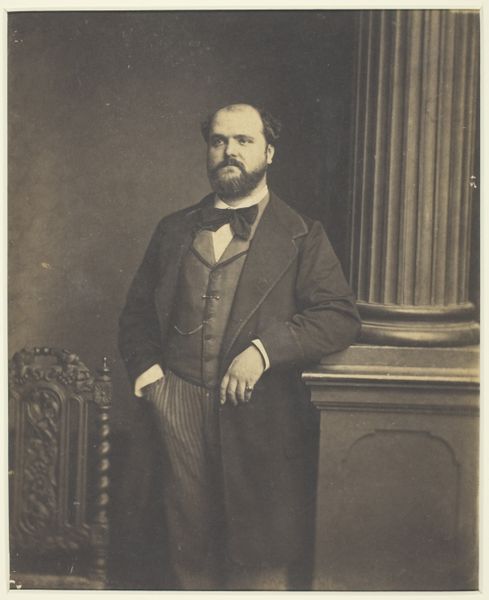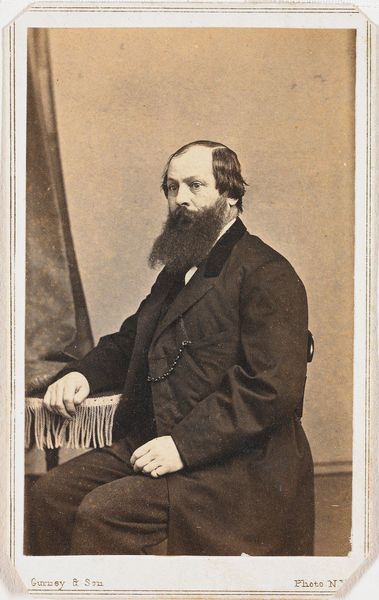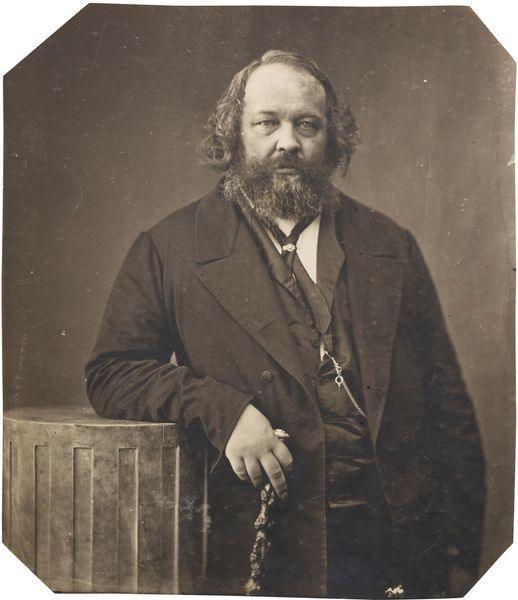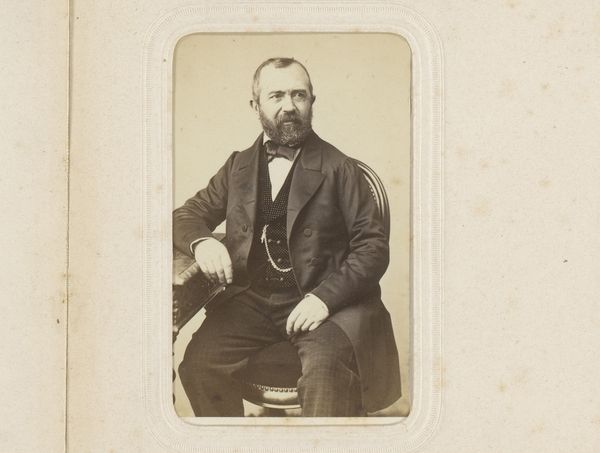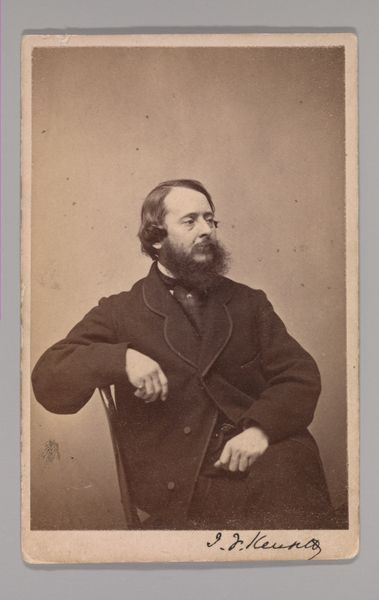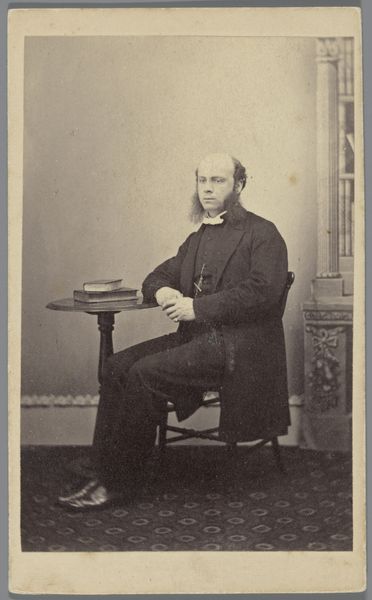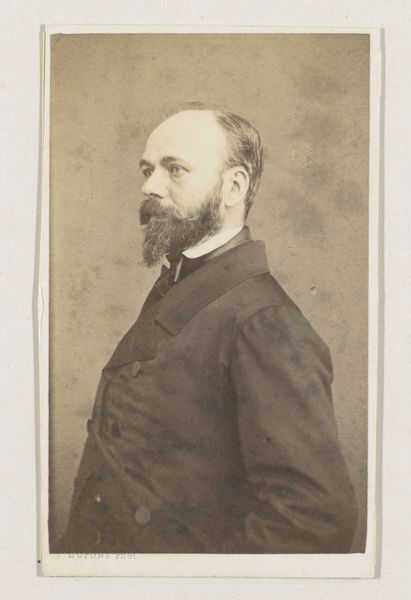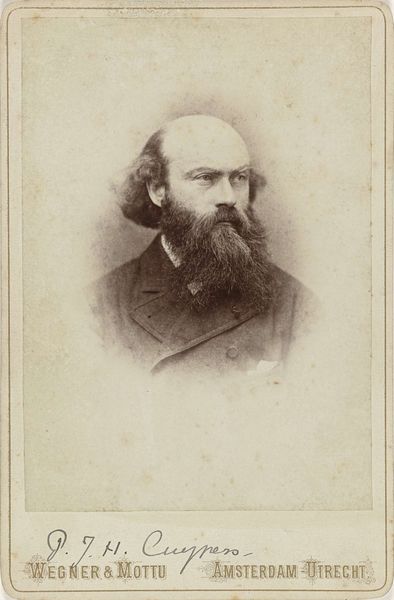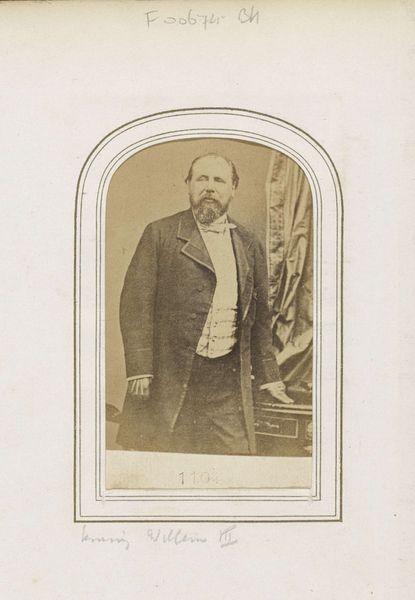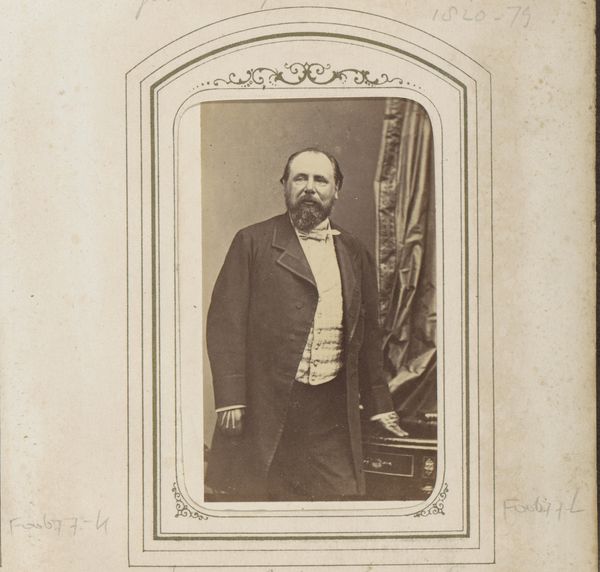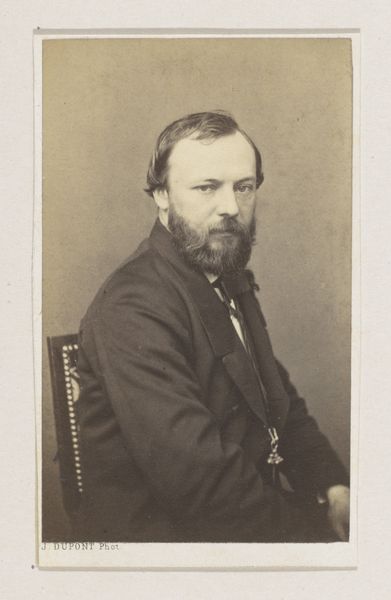
Dimensions: height 101 mm, width 61 mm, height 88 mm, width 58 mm
Copyright: Rijks Museum: Open Domain
Curator: Before us, we have a "Portrait of an Unknown Man," a gelatin silver print from around 1860, housed right here at the Rijksmuseum. It was created by the photographer Vuagnat. Editor: He seems to exude a very particular brand of mid-19th-century seriousness, doesn’t he? Almost melancholy. The stark contrasts add to that mood. Curator: Indeed. Observe the masterful use of light and shadow; the chiaroscuro effect shapes not only his features but dictates the overall emotional tenor of the image. Look at the texture of the print itself, its surface qualities—the gentle mottling, the imperfections... they imbue the photograph with a unique presence, defying its reproduction as pure sign. Editor: I wonder about his place in society. Photography was democratizing portraiture. Was he part of the burgeoning middle class, eager to partake in this modern way of documenting their existence? Was the studio located near emerging civic institutions that shaped social practices? Curator: That’s precisely the socio-historical enquiry needed. But looking at him purely aesthetically, one has to admire Vuagnat's arrangement. The composition directs our gaze towards his face and precisely rendered features. He has created such an intense study with varying tonal scales on one simple silver plate. Editor: It’s a constructed image, though. He didn't simply stroll up and pose unselfconsciously. Everything from his dress to his pose speaks volumes about performance of identity within certain class expectations and codes of visual communication at the time. And photography studios served a broader role beyond mere production—offering consumer services for presenting, preserving, and sharing photographs. Curator: Undoubtedly. Yet regardless of historical context, the geometry in the composition and nuanced manipulation of light remain arresting. The photograph transcends the historical record to become a masterclass on photographic form. Editor: Perhaps it transcends. But acknowledging its genesis as a manufactured image, responding to contemporary desires and pressures, prevents us from being passively captivated by a carefully constructed fiction of "realism." His posture and setting are deliberate choices, conveying the sitter's aspirations within a wider web of cultural meanings. Curator: Point taken. A work can succeed on several levels simultaneously: historical, socio-political and artistic. All offer insight. Editor: Exactly. He almost demands you reflect beyond face value, wouldn't you agree?
Comments
No comments
Be the first to comment and join the conversation on the ultimate creative platform.
